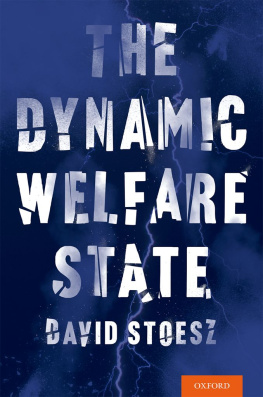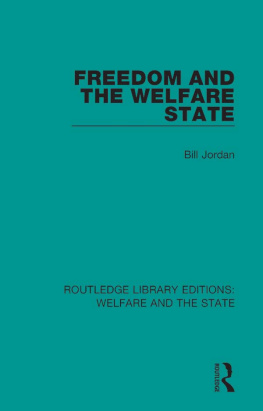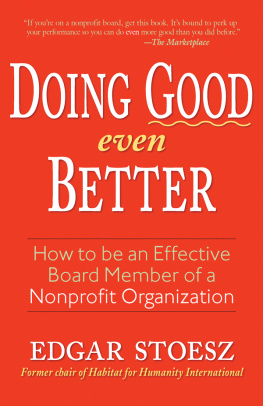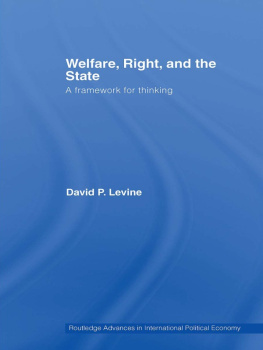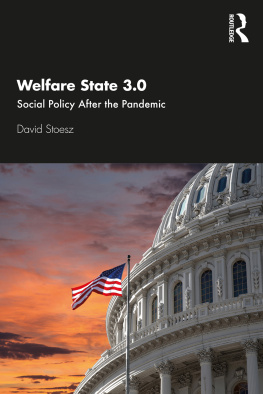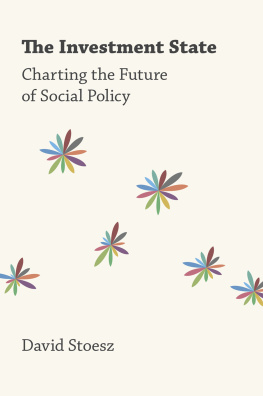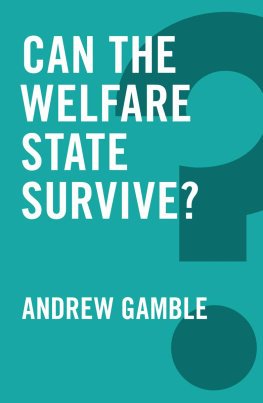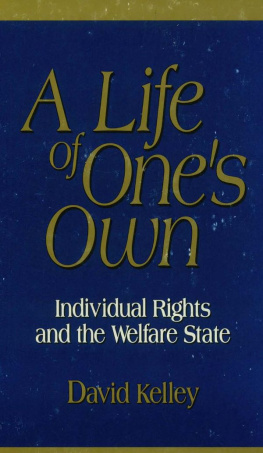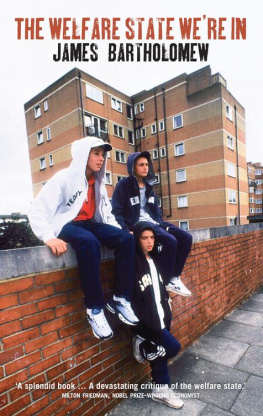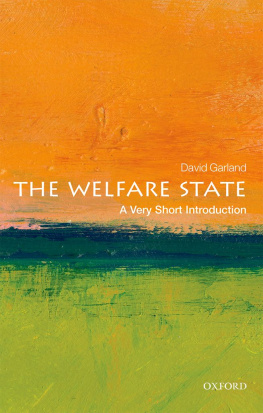Stoesz David - The Dynamic Welfare State
Here you can read online Stoesz David - The Dynamic Welfare State full text of the book (entire story) in english for free. Download pdf and epub, get meaning, cover and reviews about this ebook. year: 2016, publisher: Oxford University Press, Incorporated, genre: Politics. Description of the work, (preface) as well as reviews are available. Best literature library LitArk.com created for fans of good reading and offers a wide selection of genres:
Romance novel
Science fiction
Adventure
Detective
Science
History
Home and family
Prose
Art
Politics
Computer
Non-fiction
Religion
Business
Children
Humor
Choose a favorite category and find really read worthwhile books. Enjoy immersion in the world of imagination, feel the emotions of the characters or learn something new for yourself, make an fascinating discovery.
- Book:The Dynamic Welfare State
- Author:
- Publisher:Oxford University Press, Incorporated
- Genre:
- Year:2016
- Rating:5 / 5
- Favourites:Add to favourites
- Your mark:
- 100
- 1
- 2
- 3
- 4
- 5
The Dynamic Welfare State: summary, description and annotation
We offer to read an annotation, description, summary or preface (depends on what the author of the book "The Dynamic Welfare State" wrote himself). If you haven't found the necessary information about the book — write in the comments, we will try to find it.
The Dynamic Welfare State — read online for free the complete book (whole text) full work
Below is the text of the book, divided by pages. System saving the place of the last page read, allows you to conveniently read the book "The Dynamic Welfare State" online for free, without having to search again every time where you left off. Put a bookmark, and you can go to the page where you finished reading at any time.
Font size:
Interval:
Bookmark:


Oxford University Press is a department of the University of Oxford. It furthers the Universitys objective of excellence in research, scholarship, and education by publishing worldwide.Oxford is a registered trade mark of Oxford University Press in the UK and certain other countries.
Published in the United States of America by Oxford University Press
198 Madison Avenue, New York, NY 10016, United States of America.
David Stoesz 2016
First Edition Published in 2016
All rights reserved. No part of this publication may be reproduced, stored in a retrieval system, or transmitted, in any form or by any means, without the prior permission in writing of Oxford University Press, or as expressly permitted by law, by license, or under terms agreed with the appropriate reproduction rights organization. Inquiries concerning reproduction outside the scope of the above should be sent to the Rights Department, Oxford University Press, at the address above.
You must not circulate this work in any other form and you must impose this same condition on any acquirer.
Library of Congress Cataloging-in-Publication Data
Names: Stoesz, David.
Title: The dynamic welfare state / David Stoesz.
Description: New York : Oxford University Press, 2016. | Includes bibliographical references and index.
Identifiers: LCCN 2015031166 | ISBN 9780190251123 (hardback) | eISBN 9780190251147
Subjects: LCSH: Public welfareUnited States. | United StatesSocial policy. | Welfare state. | BISAC: SOCIAL SCIENCE / Social Work. |
SOCIAL SCIENCE / Poverty & Homelessness. | POLITICAL SCIENCE / History & Theory.
Classification: LCC HV95 .S823 2016 | DDC 361.6/50973dc23
LC record available at http://lccn.loc.gov/2015031166
For Ann and Roy,
Bedrock.
The issues of social policy the United
States faces today have no European
counterpart nor any European model
of solution. They are American problems,
and we Americans are going to have to
think them through ourselves.
Daniel Patrick Moynihan
Conceived during the twentieth century as a commitment by government to provide benefits and services to ameliorate the risks of citizens exposed to poverty, joblessness, illness, and discrimination, the American welfare state is being transformed. By the beginning of the twenty-first century, public policy was being crafted in accord with the requirements of for-profit firms, most conspicuously evident in the Medicare Modernization Act (MMA) of 2003 and the Affordable Care Act (ACA) of 2010. Increasingly, public programs were contracted out to proprietary companies that managed not only prescription drugs for seniors but also health insurance for working-class households and low-income families dependent on Medicaid. The commercialization of social welfare was not limited to healthcare, however; markets also emerged in corrections, education, and financial services, institutions that tended to serve lower-income citizens who were struggling to reconcile their aspirations with declining public support. Conceptually, the evolution of the American welfare state occurs in three stages. Welfare State 1.0 consists of social insurance. Welfare State 2.0 focuses on public assistance. However, Welfare State 3.0 represents a qualitatively different development: the emergence of social markets.
The transformation of the American welfare state has momentous ideological implications for social policy. Accustomed to the notion that social programs in the United States would eventually replicate the European model, American liberals have been chagrined to watch their welfare state take a hard turn to the Right. Emanating from the Progressive Era, the American welfare state was the construction of the liberal architects of the Social Security Act of 1935; later they expanded the nations infrastructure of social programs during the 1960s through the War on Poverty. Thus, in the decades following the New Deal, the American welfare state grew as social entitlements provided benefits to millions of Americans, funded by progressive taxes generated from a booming postwar economy. The liberal momentum behind the American welfare state shuddered with the recession of the mid-1970s due to the oil embargo, then halted with the election of Ronald Reagan to the presidency in 1980.
The Reagan presidency reflected an ascendant conservatism that not only restrained liberal ambitions but also culminated in the 1996 welfare reform, signed by a nominally liberal Democratic president. Bill Clintons political apostasy was widely condemned by liberals, but they largely ignored a more profound economic change: the rise of for-profit firms exploiting an expanding array of social markets. If corporate incursions into social policy served liberal ends, their objectives could hardly be condemned, evident in Democratic support for passage of the MMA, which introduced the prescription drug benefit to elders, as well as the ACA, which expanded health insurance to the working poor and welfare recipients. These developments were contentious, neither embraced by all liberals nor all conservatives. Market-oriented Republicans, for instance, viewed MMA and ACA as a desirable insertion of business into the government monopoly of social provision, whereas deficit hawks from the Tea Party decried more government spending. Regardless, a new trajectory in social policy had emerged.
Fundamentally, MMA and ACA represent conservative economic objectives, the means for their accomplishment contrived by a practice of long standing: corporations formed trade associations, which hired lobbyists to bring public policy in line with industry preferences. Subsequent Supreme Court decisions on campaign finance unloosed unprecedented volumes of cash to promote candidates as well as issues. Increasingly, the influence of wealthy individuals and corporations moved from federal to state elections, further extending their reach. The funding of think tanks, which scripted reports to conform to the ideological preferences of sponsors, clouded public debate by obfuscating the value of independent assessment, truth, in public debate. Finally, the evolution of deep lobbying combined with dark money contributed to the specter of actors manipulating the polity, raising fundamental questions about the future of democracy. That much of this behind-the-scenes activity would be classified under the IRS Code as social welfare strains the meaning of irony, since many of these political machinations have targeted government social programs. Coming on the heels of the success of the Tea Party in containing the expansion of federal social programs, the 2014 midterm elections, which left the Senate in Republican control, proved ominous for liberals and their designs to advance social justice through the welfare state.
leaving liberals flummoxed, their dream of using the federal government to attain a socially just society dimmed. Not only was the public utility model, through which government was the provider of services, replaced by a reliance on commercial vendors, but citizens were also expected to select providers and pay for services themselves. All this could be fodder for a jeremiad against conservative, corporate influences in social policy, except for the extensive failure of the professional project advanced by liberals via the welfare state. With the exception of social insurance, especially Social Security and Medicare, the social welfare programs that have been advanced through the welfare state have been problematicat best benign and at worst harmful to citizens. Social programs integral to the welfare statemental health, education, and social serviceshave not delivered benefits as promised. This is evident in the fiasco of deinstitutionalization of the mentally ill, the extensive failure of public education, and the school-to-prison pipeline inducting troubled, minority youth into the correctional system. The origin of much of this harm can be traced to professional education, where self-governing universities, abetted by self-governing professional associations, have been permitted to enroll weak students, retain complacent faculty who teach inferior practices, and evade their public responsibility to conduct research that contributes to public benefit. Buffered from public accountability, professional education is thus implicated in the decline of public support for the welfare state. When Americans encounter on a regular basis the homeless mentally ill, scandals relating to child welfare services, and large numbers of high-school dropouts, voter reservations about the value of government social programs are inevitable. In the past, professionals, most of whom are liberal, have responded by calling for more public funding; yet, the public perceives little relationship between program support and program outcome, at least outcomes that are cost-effective and positive. While the American public has expressed sympathy and concern for the disadvantaged, it has lost faith with conventional, governmental strategies for helping them. The problem of the credibility of the American welfare state is unlikely to be resolved until evidence-based services are embedded in professional practice and social programs are reorganized in a more effective and efficient manner.
Font size:
Interval:
Bookmark:
Similar books «The Dynamic Welfare State»
Look at similar books to The Dynamic Welfare State. We have selected literature similar in name and meaning in the hope of providing readers with more options to find new, interesting, not yet read works.
Discussion, reviews of the book The Dynamic Welfare State and just readers' own opinions. Leave your comments, write what you think about the work, its meaning or the main characters. Specify what exactly you liked and what you didn't like, and why you think so.

